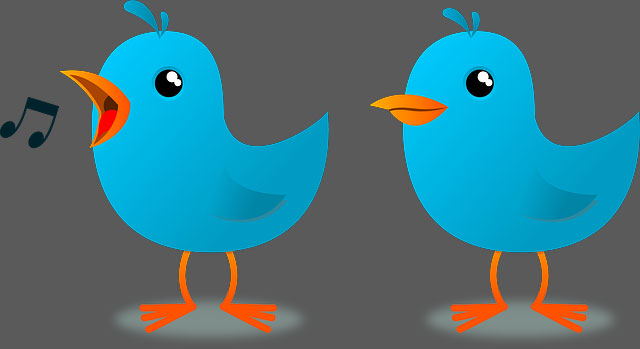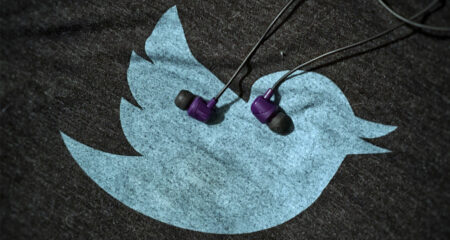
Tweeting has become a serious business, with financial spin-offs if done right, so it’s no wonder that researchers continue to seek out the “tweet spot” when it comes to using Twitter effectively.
It appears that everyone wants a piece of the action, and some users go to extraordinary lengths to rack up a high number of followers.
Twitter is home to more than 555m active, registered users who together tweet 58m times a day. About 135 000 more sign up every day.
There are a number of tricks of the trade when it comes to mastering the platform.
The first consideration for any Twitter user may be whether the number of times you tweet has crossed the line from ineffective to downright annoying. But the magic number has yet to be found.
According to research by Dan Zarrella, a social media scientist at US-based Internet marketing company Hubspot, 2011 data shows that 22 tweets a day is optimal.
But in 2012 research, social enterprise software firm Buddy Media found it is detrimental for a company to tweet more than four times a day, and SumAll — an analytics tool for marketers — claims six times a day is ideal for business.
The Buddy Media study, “Strategies for Effective Tweeting: A Statistical Review”, analysed user engagement for more than 320 Twitter handles of the world’s biggest brands.
“It is not enough to simply publish content and hope for the best. Instead, you need to know when to tweet, what to tweet and how often to tweet,” Buddy Media said.
Here are some of its key findings:
— Tweets are limited to 140 characters, but shorter is more tweetable. Those that contain fewer than 100 characters receive 17% higher engagement than longer tweets and “leaving a little room in a tweet allows followers to insert their own text before your content”.
— Only 24% of tweets contain hashtags, although such tweets receive twice as much engagement. But it is best to use them sparingly, says Buddy Media.
“Our data shows that tweets with one or two hashtags have a 21% higher engagement than those with three or more hashtags. Tweets that use more than two hashtags actually show a 17% drop in engagement.”
— Tweets that ask followers to “retweet” or “RT” receive 12 times higher retweet rates than those that do not use it. When followers are specifically asked to “retweet”, the retweet rate is 23 times higher than average. The retweet rate is only 10 times higher when followers are asked to “RT”.
Tweets that contain links also receive 86% higher retweet rates. But, ultimately, knowing your audience is key, especially knowing when they are online.
When brands tweet between 8am and 7pm, they receive a 30% higher engagement than other times. This is even more effective on weekends.
“Tweeting on a weekend is more effective as Twitter engagement rates for brands are 17% higher on Saturday and Sunday compared with weekdays,” Buddy Media said.
The best days to tweet vary for different target markets.
Engagement for clothing and fashion brands is highest on the weekend and lowest on Thursday. Compared with the rest of the week, tweets published by entertainment brands on Sunday and Monday receive 23% more engagement.
For publishing, engagement on Saturday is 29% higher, yet only 7% of brand tweets occur on this day. Buddy Media found that people are more likely to engage with sports brands on Twitter during the weekend, with the engagement rate 52% higher on Saturday and Sunday.
But why go through all of the effort of building up followers when you can just fake it — by going through one of the numerous websites that offer Twitter followers for a fee.
According to a New York Times blog, the fake follower phenomenon made headlines after US politician Mitt Romney’s Twitter following jumped by 100 000 in a matter of days in August last year — although his campaign leaders denied any such action had been taken.
Socialmediaadd.com is one site where, for example, for $59/month you can secure a thousand new followers.
Buying in bulk means more value for money and you can take advantage of a one-day special (which appears to be on offer every day) of $199 a month for 10 000 new followers. Instagram and Pinterest followers and Facebook friends are also on offer.
Locally, Johannesburg-based company Onlinecart.co.za sells Twitter and Instagram followers. Here, a thousand Twitter followers costs R250 and 100 000 will set you back R6 000.
In a May seminar titled “Twitter and the Underground Market”, Italian researchers Carlo de Micheli and Andrea Stroppa say fake followers are a “multimillion-dollar” market.

Bogus followers, they say, are sold at an average price of $18 for a thousand, and sellers can make between $2 and $36 for each fake account.
De Micheli and Stroppa’s analysis shows that only about half of Twitter’s registered accounts follow two or more people and only 10% follow more than 50, but they estimate that fake accounts make up 4% of Twitter’s user base.
Their presentation cites Twitter profiles that grew inorganically and suddenly, jumping by tens of thousands in just a matter of days. These include the likes of Mercedes-Benz, Pepsi and Red Bull Stratos.
In a video on the Social Media Add website, its CEO, Brandon Gaille, said having a high follower count acts as an endorsement and helps to bring in new business and reassure existing clients.
“People on Twitter like to follow people who have a high follower count,” Gaille said.
But fake followers may not be a great idea. De Micheli and Stroppa say fake followers are easy to spot and tarnish a business’s credibility.
The fake follower phenomenon has prompted a number of profile auditing sites that attempt to analyse how many followers of any given handle are fake, inactive or good.
Statuspeople.com offers a fake followers app to audit the followers of any Twitter handle, claiming to offer a fairly accurate insight for those handles with 50 000 followers or less.
Other sites, such as Twitteraudit.com, take a random sample of 5 000 followers and calculate a score based on number of tweets, dates of the last tweet and ratio of followers to friends.
But the different audits can produce different results and, according to Theblaze.com, not all fake followers are gained willingly.
Many are accumulated through networks of spam or Internet bots — software that runs automated tasks over the Internet, creating fake accounts that accumulate legitimate followers and then use the platform for phishing (using fraudulent emails to extract financial data from computer users), hacking and spamming with links.
High-traffic sites tend to be more at risk. For example, Statuspeople.com determined that the Mail & Guardian Business’s account, @mg_biz, with 150 followers, was found to be 80% good, 16% inactive and 4% fake.
The bigger @mailandgaurdian, with over 136 000 followers, was found to be 31% good, 41% inactive and 28% fake.
Lady Gaga’s handle was 32% fake and 35% good, president Jacob Zuma’s was 35% fake and 24% good, and Julius Malema’s was 38% fake and 24% good.
The M&G found a major discrepancy when using different apps to audit soft drink company @pepsi. Statuspeople.com found @pepsi followers to be 58% fake, and Twitteraudit.com gave it an audit score of 91%.
De Micheli and Stroppa concluded that all user interaction on the main social networks can be easily faked and “there is no way to effectively measure a company’s presence on social networks”.
But accumulating real followers makes money sense. According to SumAll, there is a correlation between tweets made and dollars earned across more than 900 of its customers.
When Twitter is successfully integrated into a company’s digital marketing efforts, SumAll found a 1% to 2% increase in total revenue.
“When looking at businesses before they started using Twitter and then after they sent out their first tweet, we found that initial tweet was worth $25,62,” SumAll said.
“A single retweet was then valued at $20,37. This figure is notably variable from business to business.”
Put into perspective, the value of Twitter to business falls between e-mail marketing and pay-per-click digital advertising — it’s up to the individual businesses to find a balance that works for them. — (c) 2013 Mail & Guardian
- Visit the Mail & Guardian Online, the smart news source




